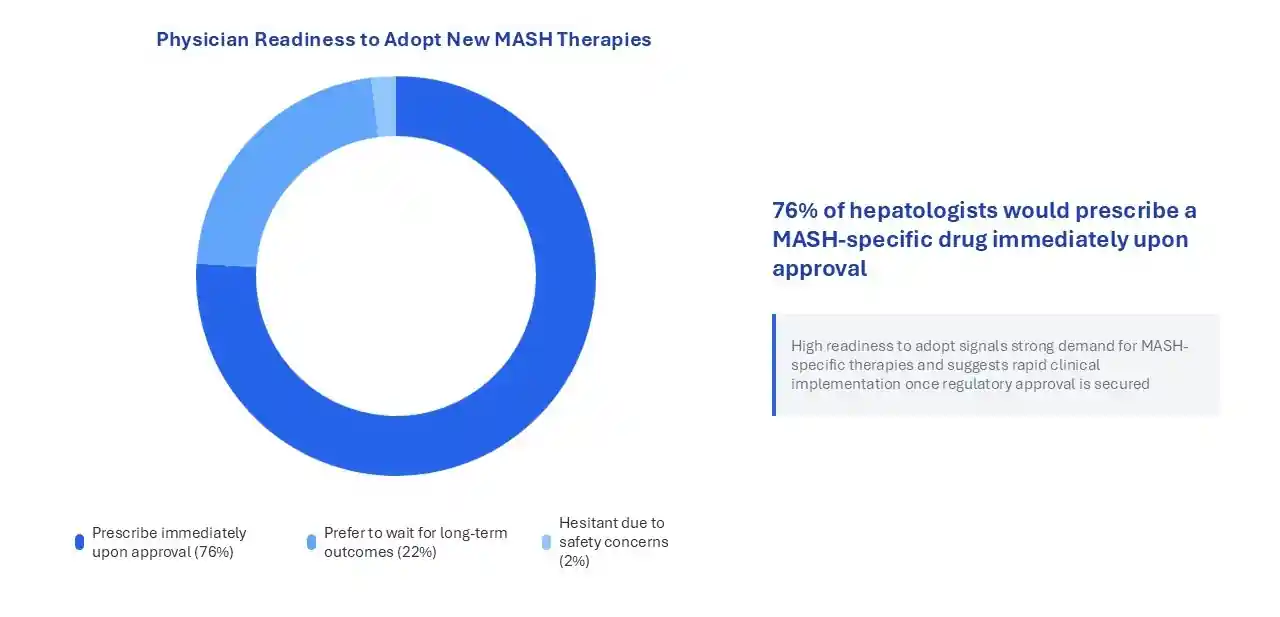
MASH Management Insights: 50-Hepatologist Global Survey
Metabolic dysfunction–associated steatohepatitis (#MASH) has become a significant global health concern, yet clinical practice and resource access differ meaningfully across regions. To better understand these variations, we conducted a survey among 50 hepatologists practicing in Europe (EU) and the United States (US).
Key Findings
Strong Awareness of #MASH Terminology
An overwhelming 94% of respondents reported routine use of the MASH terminology, reflecting rapid adoption across clinical practice.
Readiness to Adopt Emerging Therapies

Diagnostic Approaches Favor Non-invasive Tools
Most hepatologists rely on widely available, noninvasive methods:
- #FIB-4: 90%
- Transient #elastography: 88%
- #MRI-PDFF: only 32%
- #Liver biopsy: used selectively, primarily for diagnostic uncertainty (74%)
Treatment Patterns Are Heterogeneous
Lifestyle modification remains universal (100%), but pharmacologic strategies vary:
- #GLP-1 receptor agonists: 68%
- #Pioglitazone: 42%
- #Vitamin E: 28%
Significant Barriers Persist
Physicians cited several key obstacles to optimal MASH management:
- Lack of approved therapies (82%)
- Reimbursement and coverage challenges (60%)
- Low patient adherence to lifestyle changes (56%)
Notable Regional Differences
- EU physicians reported lower access to MRI-PDFF (20% vs 45% in the US)
- Off-label use of GLP-1 receptor agonists was more common in the US (80% vs 60%)
Conclusion
While awareness and adoption of MASH terminology are strong, notable disparities in diagnostic access, therapeutic approaches, and systemic barriers remain across regions. As new MASH treatments advance toward approval, establishing standardized care pathways, improving diagnostic access, and addressing reimbursement barriers will be critical.
Our Global Clients
Our data-driven insights have influenced the strategy of 200+ reputed companies across the globe.




















